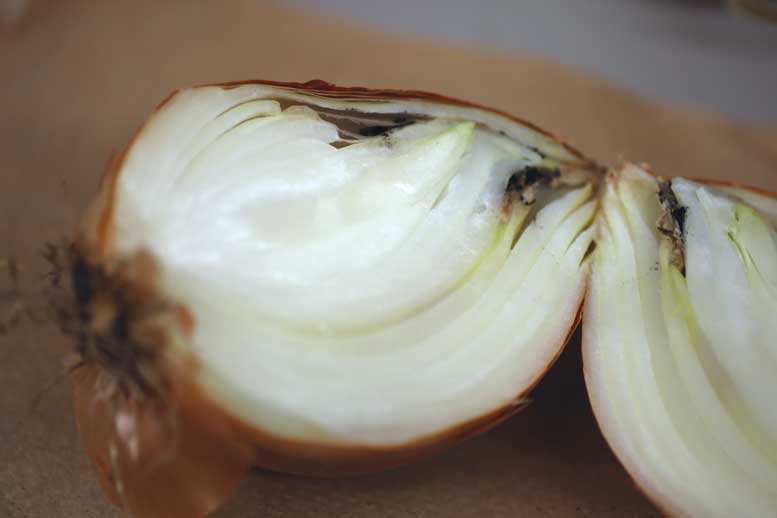Answer:
The onions have black mold. The signs and symptoms are caused by Aspergillus niger. The black discoloration on the bulbs is the spores of the fungus. Aspergillus invades outer onion scales through wounds. Spores can develop under the dry outer scales (Photo 1). Infected inner scales often become water soaked. Under dry conditions, infected scales may dry up (Photo 2). In addition, infected scales can be colonized by secondary pathogens such as bacteria, leading to decay of the entire bulb (Photo 3).
A. niger is found on onions worldwide. It survives on plant debris in the soil, and spores are dispersed by wind. It is a weak pathogen that infects damaged onions through wounds. Infection can occur over a wide range of temperatures (63-93 degrees Fahrenheit) and high humidity (above 80 percent for at least six hours). Below 59 degrees Fahrenheit, fungal growth will stop but resumes growth as soon as temperatures get above the threshold. Storing onions in boxes or bags above 75 degrees Fahrenheit can make the disease worse. This is something to take into consideration when onions are stored at low temperatures but transported long distances to customers on unrefrigerated trucks in the summer time.
Using seed treated with fungicides, avoiding injury to bulbs at harvest, and storing and transporting onions below 59 degrees Fahrenheit and low humidity can reduce disease incidence. Wide temperature fluctuations should be avoided. They can result in condensation forming on onion bulbs, providing the moisture needed for spores to germinate.



